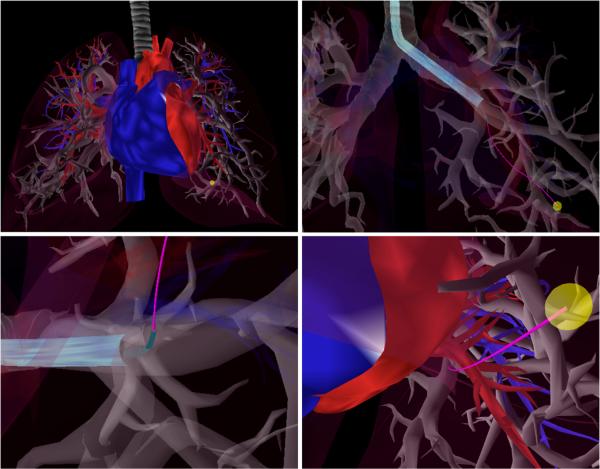Fig. 1.
Example motion plan for the multilumen transoral lung access system reaching a lung nodule (yellow) while avoiding significant blood vessels (red and blue). Upper Left: Anatomical environment. Upper Right: The first stage of the system, a bronchoscope (light blue), is deployed through a bronchial tube. Lower Left: The second stage of the system, a concentric tube robot (green), is deployed through the bronchoscope and pierces the bronchial tube, entering the lung parenchyma. Lower Right: The third stage of the system, a bevel-tip steerable needle (pink), is deployed from the concentric tube robot and steers through the parenchyma to reach the lung nodule while avoiding anatomical obstacles. Each stage in this coupled system must be considered when computing a safe motion plan.

